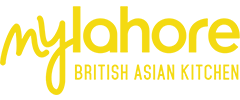Menu engineering is more than a buzzword for the F&B industry – it could make the difference between growth and failure for your business.
NFS asked Michelin starred chef John Wood – Co-Founder of our strategic partner Kitchen CUT – to explain what it is, and why you need it.
John says: “Menu Engineering is used within the hospitality industry, but it can be applied to any business that makes and sells food or beverage.
The main aim is to maximise a business’s profitability by subconsciously encouraging customers to buy what you want them to buy.”
That usually means the higher profit dishes – and those that have the best margin percentage.
Why do you need it?
John says: “Chefs need to be able to analyse three elements of their menu: each dish, menu sections and also the overall appearance of the menu.
“Only then can you make calculated decisions about keeping or removing dishes, whether you need to change how dishes are positioned on the menu and whether changing a description could affect a dish’s sales.”
Menu engineering examines:
- How many of each dish you sell (compared to the rest of your dishes)
- What food cost / GP% each dish achieves
- How much money you earn every time you sell each dish.
John says: “Analysing these elements tells you what you need to know about your menu.”
What’s the psychology behind it?
Whether you present your menu in a traditional format, on a blackboard or another way, the way diners perceive your menu visually affects the dishes they choose.
John says: “Most menu engineering recommendations focus on how to draw attention by arranging categories within the menu’s pages, as well where items are placed within each category.
“This is referred to as the menu’s ‘sweet spots’.
“Customers are most likely to remember the first and last things. Studies show that depending on the menu presentation, the sweet spots will vary.
“This is because the menu layout has an impact on how the diner’s eye travels around the menu – their ‘optical journey’.”
Customer perception of menu items is also be affected by subtle manipulations, eg putting dishes in a box, or in bold print. Using a £ or other symbol can draw attention to the price, rather than the menu description.
Why should you use menu engineering?
The main aim is to encourage people to buy targeted items, and to make educated decisions on whether a dish needs to be changed or removed.
So first, you need to calculate the cost of each item on the menu, including all the costs incurred to produce and serve it.
After that, evaluation of an item’s profitability is based on the contribution margin, which is calculated as the menu price minus the cost.
Menu engineering then focuses on maximizing the contribution margin of each order.
John says: “Recipe costing (at least the ingredient part of it) should be updated every time you see price changes from suppliers. Kitchen CUT’s automated sub recipe, recipe and menu pricing and costing update allows the chef to see this instantly.
“Our fully automated menu engineering tool links to all your sub recipes and recipes. This exciting new development allows you to analyse your menu whenever and as many times as you want, very quickly and easily.”
* Kitchen CUT, specialist in end-to-end supply chain software, is a strategic partner of NFS and integrates with Aloha EPOS software.
















